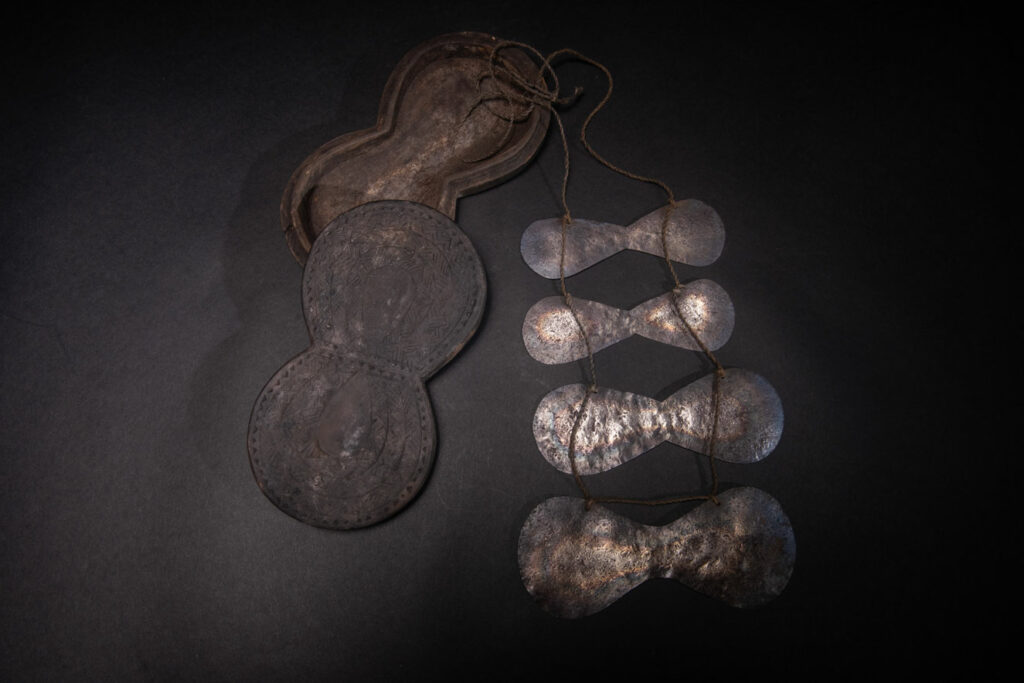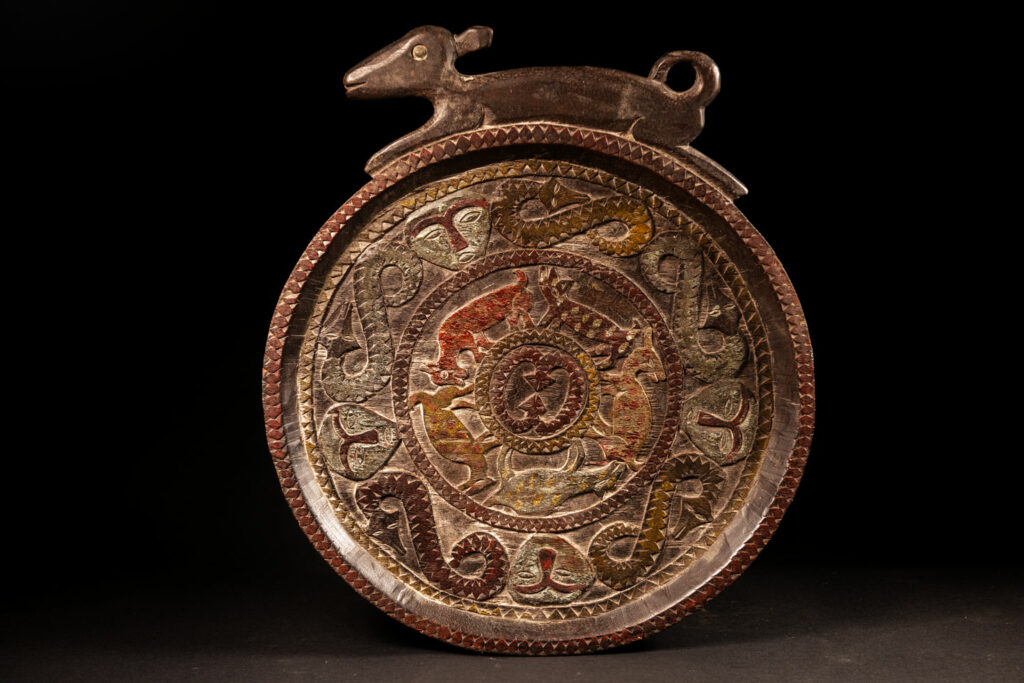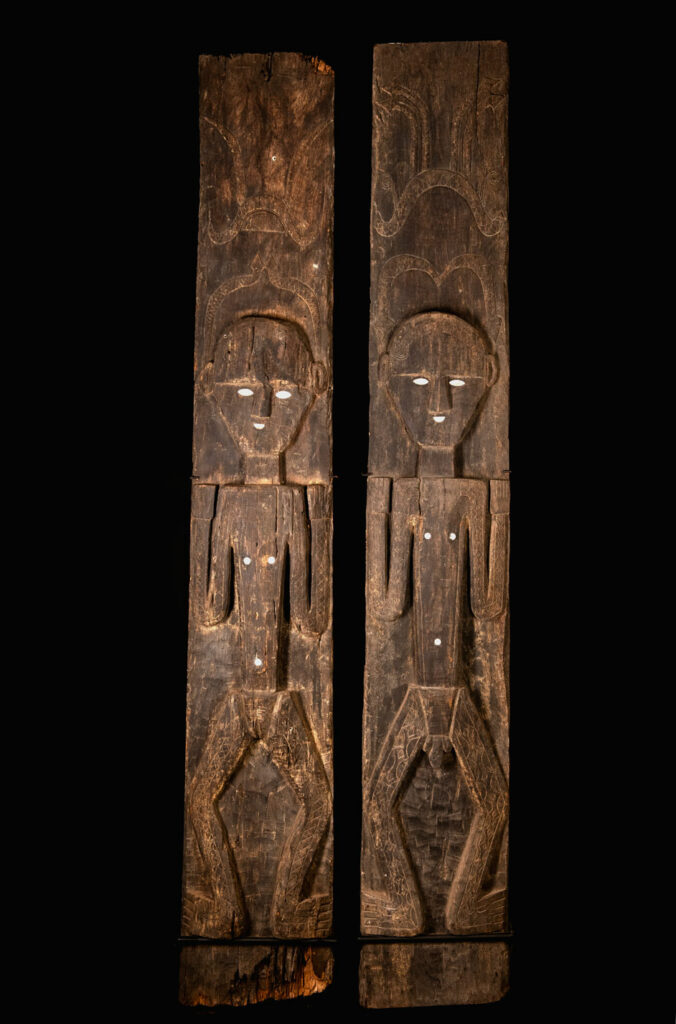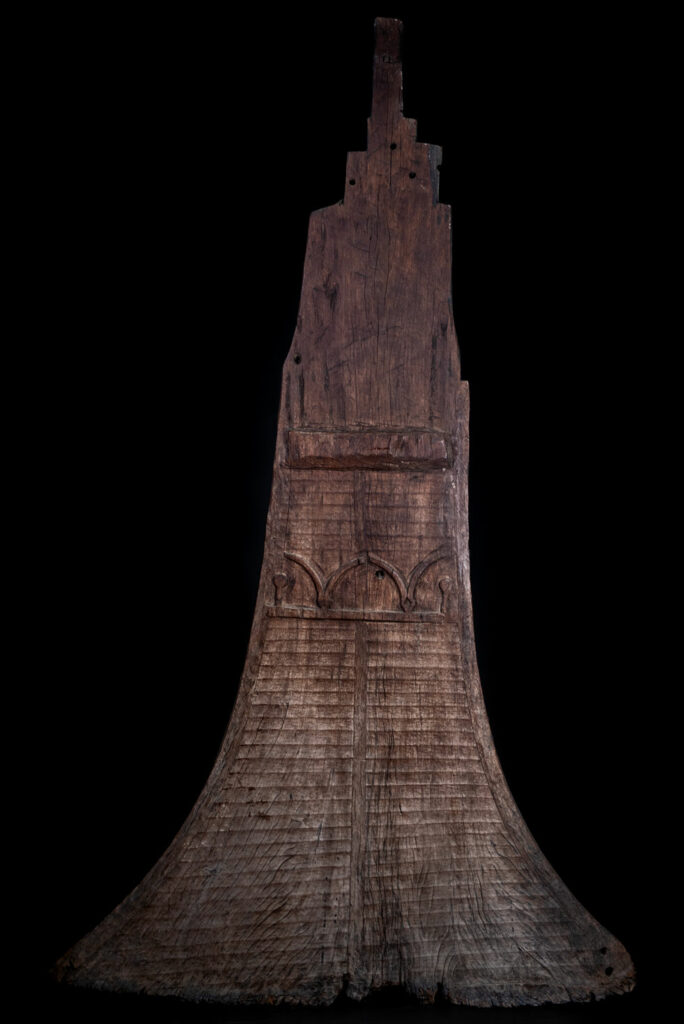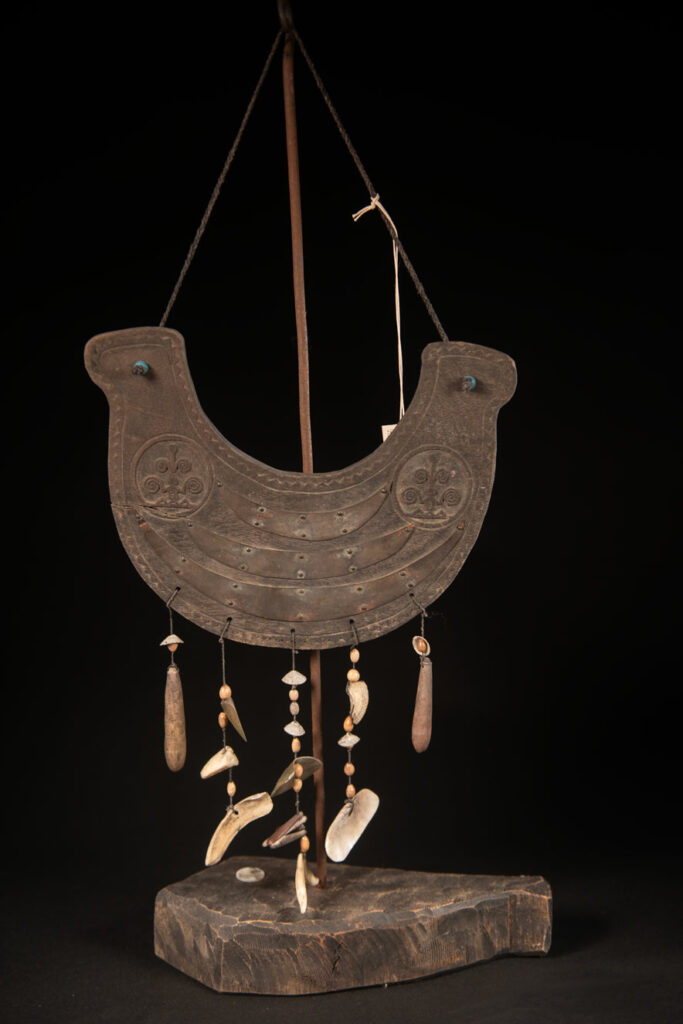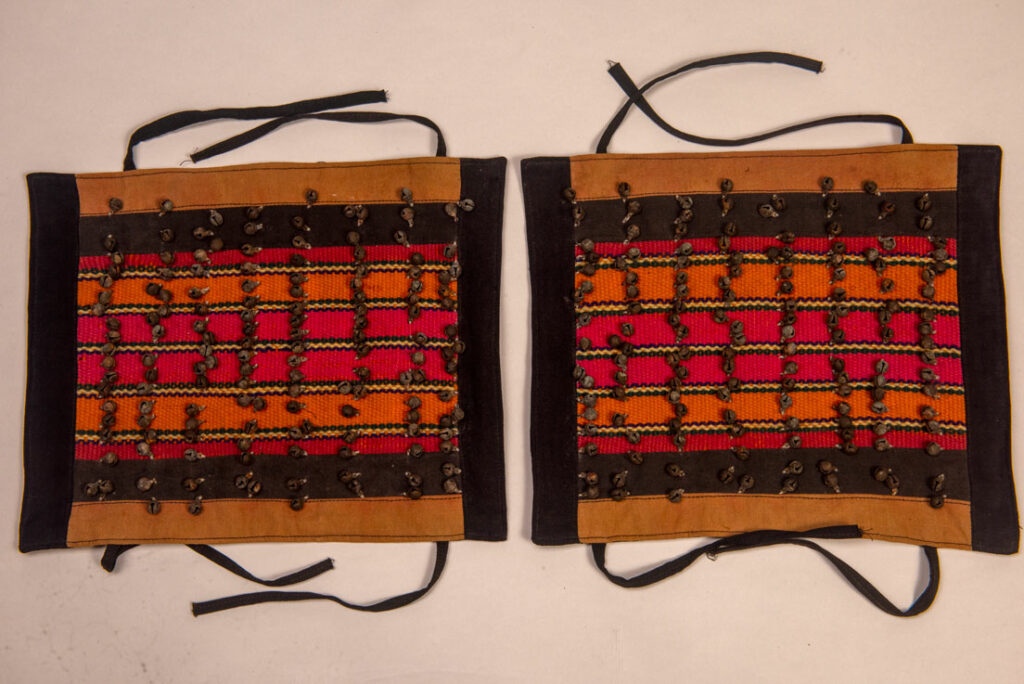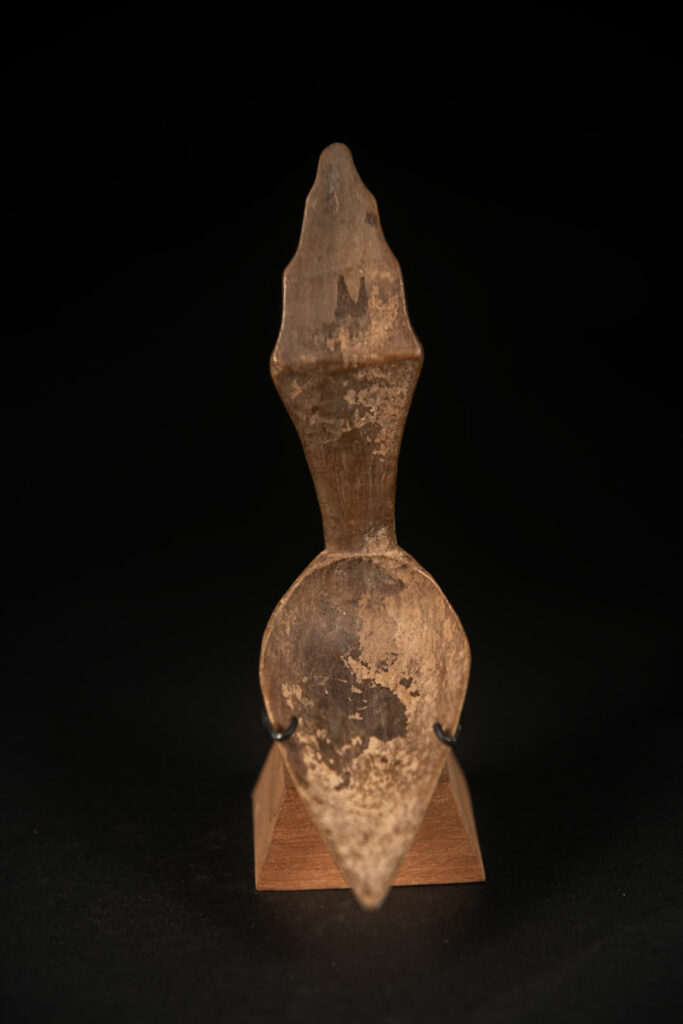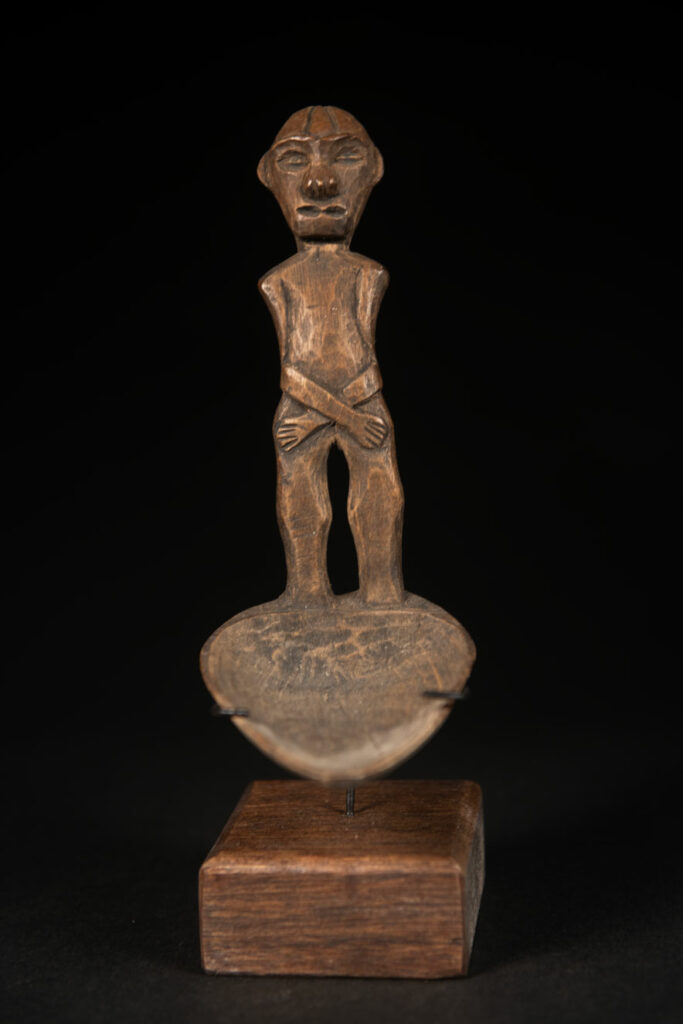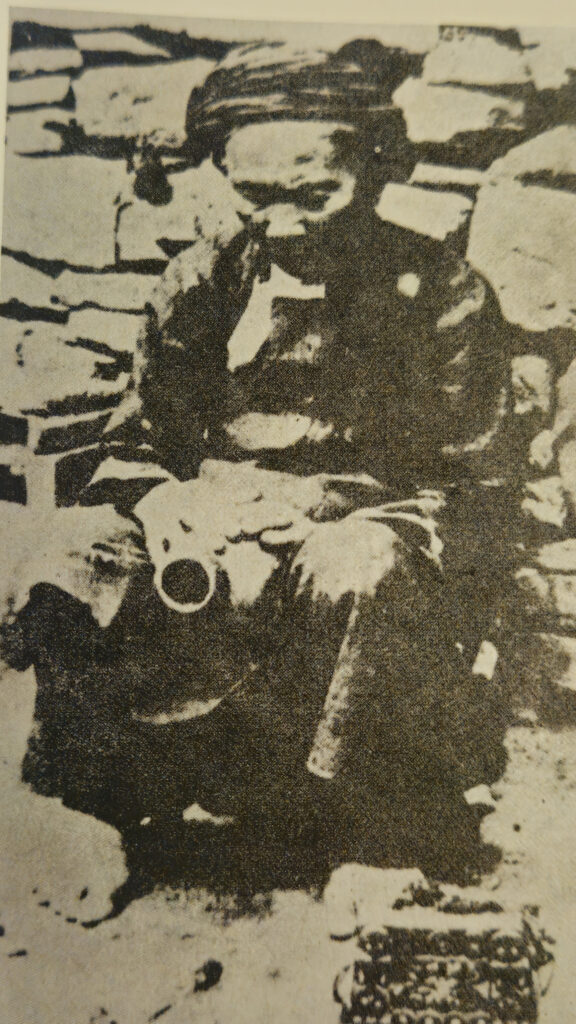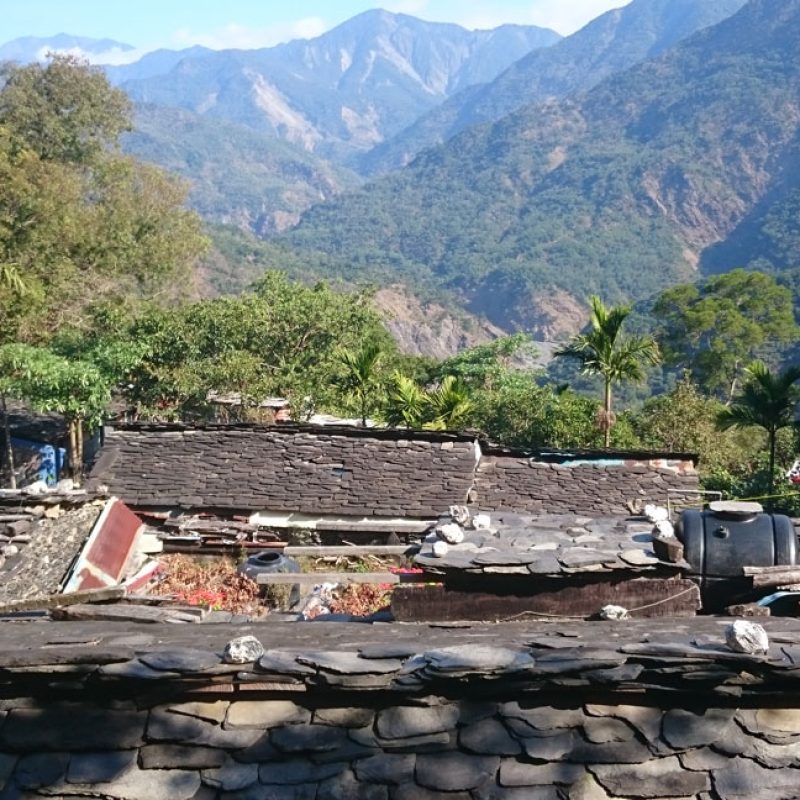Philippe D'Avignon Gallery
Tribal Art from Taiwan, Indonesia and New Guinea.
Galerie Philippe d’Avignon is directed by Philippe, a French ethnology enthusiast who has been exploring the Indigenous cultures of Taiwan for over twenty-five years and resides on the island. His enduring commitment has led him to study, document, and foster long-standing relationships with numerous tribal communities living in the mountainous regions of Taiwan.
The tribal artworks presented here originate primarily from his extensive personal collection, assembled over decades through collaborations with researchers and Taiwanese ethnologists, as well as through acquisitions from historical Taiwanese, Japanese, and international collections. A significant portion of these pieces also comes directly from Indigenous families he has met in traditional village settings.
Some artifacts have undergone meticulous in situ research within ancestral villages to trace their provenance, ritual or social function, and, in certain cases, to re-establish connections with the familial lineages to which they were once linked.
RECENT ACQUISITIONS
TAIWAN TRIBES
Discover the different Indigenous tribes of Taiwan by clicking on the map areas.
PINGPU TRIBES
The term Pingpu refers to all the tribes living along the coasts and in the plains of western and northern Taiwan. There are more than fifteen such tribes, the most well-known being the Kavalan, Ketagalan, Thao, and Siraya. Due to their geographical location, the Pingpu were the first to come into contact with the Han Chinese and were therefore heavily influenced by Han culture.
Today, the Pingpu population has largely blended into the general Taiwanese population, and most no longer identify with this ethnic group.
PAIWAN TRIBES
The Paiwan, numbering over 100,000 individuals, are renowned for their rich artistic traditions.
Primarily residing in the southern regions of Taiwan at altitudes below 1,000 meters, the Paiwan society is structured around a rigid social hierarchy, consisting of chieftains, clans, nobility, and commoners. Inheritance of family property follows a primogeniture system, with the eldest child—regardless of gender—receiving the estate.
Elaborate decorative motifs adorn their clothing, dwellings, and sculptures. The “Three Cultural Treasures of the Paiwan” are distinguished as pottery vessels, glass beads, and bronze knives. Ancestral worship plays a central role in Paiwan spirituality, closely tied to beliefs surrounding clan origins.
ATTAYAL TRIBES
The Atayal, with a population exceeding 100,000, are renowned for their intricate weaving and ancient facial tattooing practices.
They possess the widest geographical distribution among Taiwan’s Indigenous groups, primarily residing in mountainous regions of central and northern Taiwan. Linguistic and cultural variations exist among Atayal communities depending on their location.
Historically, facial tattooing was a significant cultural practice: for women, it symbolized mastery of weaving; for men, it signified prowess in battle. Atayal textiles often feature rhombus patterns, representing the eyes—or spiritual protection—of the ancestors. Social life is governed by gaga (also known as gaya), a set of ancestral teachings. The Atayal also maintain a strong belief in supernatural spirits known as rutux.
PUYUMA TRIBES
The Puyuma, with a population of over 13,000, are distinguished by a rigorous male training system.
They reside in the southern plains of the Taitung Rift Valley, especially in Taitung City and Beinan Township of Taitung County.
In the 17th century, Nanwang Village was famed for producing the strongest warriors, having developed a strict regimen of physical and cultural training for boys and men, centered around the youth meeting hall.
Puyuma culture is characterized by this youth hall system, alongside traditions such as embroidery, floral wreaths, and shamanism. Their major celebration is the Annual Festival, which includes the Monkey Festival and Grand Hunting Rites—ceremonies that serve as coming-of-age trials for young men.
RUKAI TRIBES
The lily holds deep symbolic value among the Rukai, representing a woman’s virtue and a man’s bravery. The Rukai population exceeds 15,000.
They inhabit the southern stretches of Taiwan’s Central Mountain Range. According to tribal legend, their ancestors first arrived on the east coast and then migrated across the mountains to settle in Old Haocha Village and Wutai Township in Pingtung County.
Rukai society traditionally followed a patrilineal and hierarchical structure, comprising noble and common classes. Inheritance was passed to the eldest male. Wearing a white lily during special ceremonies signified a virtuous woman or a skilled hunter.
YAMI TRIBES
The Yami (Tao), with a population of over 3,500, maintain a unique maritime culture.
The name “Yami” was coined by Japanese anthropologist Ryuzo Torii, though in recent years, the name “Tao” has been increasingly adopted by the community.
The Tao live in six villages on Lanyu (Orchid Island), off the coast of Taitung County, and are the only Indigenous group in Taiwan whose culture is based on marine fishing.
They construct traditional wooden boats and semi-subterranean homes. Central to their lifestyle is the flying fish culture. Unlike other Indigenous groups, the Tao do not hunt. Their relationship with the Pacific Ocean is reflected in their spiritual beliefs, architecture, boat-making, and daily tools.
AMIS TRIBES
With a population of approximately 200,000, the Amis represent the largest Indigenous group in Taiwan.
They are primarily located along the eastern flank of the Central Mountain Range, in the East Rift Valley, and on the coastal plains of eastern Taiwan. Most Amis villages are situated in flatlands, near the coast or along rivers.
Traditionally, the Amis society was matrilineal, with labor and authority structured according to gender roles. Men also adhered to an age-based hierarchy in the distribution of duties. The Harvest Festival, held annually in July and August, is the most renowned and culturally significant of Amis ceremonies.
SAISIYAT TRIBES
The Saisiyat, with a population exceeding 7,000, are best known for their unique ritual, the Pas-ta’ai—the “Ceremony for the Spirits of the Short-Statured People.”
The Saisiyat inhabit mountainous regions along the border between Hsinchu and Miaoli counties. Due to their proximity to Atayal and Hakka communities, Saisiyat culture has been shaped by both Indigenous and Han influences.
Saisiyat surnames often derive from elements of the natural world, such as plants, animals, or natural phenomena. Traditionally, the Saisiyat practiced facial tattooing: women tattooed their foreheads, while men tattooed their foreheads, chins, and sometimes their chests.
The Pas-ta’ai is the most prominent of their ceremonies. Held over three nights every two years in November or December, it commemorates a mythological group of short-statured people who, according to legend, once lived alongside the Saisiyat and imparted spiritual knowledge.
Bunun Tribes
The Bunun, with a population exceeding 70,000, are internationally renowned for their distinctive polyphonic singing.
They inhabit the highest elevations among Taiwan’s Indigenous groups, residing on both the eastern and western slopes of the Central Mountain Range at altitudes between 1,000 and 2,000 meters. Historically, the Bunun experienced significant migrations, and their villages were traditionally scattered across remote mountainous terrain.
The Bunun maintained a symbolic calendar to track key agricultural and hunting events. Among their major rituals are the Ear Shooting Festival and the Millet Planting Ceremony. During the latter, the Pasibutbut—a polyphonic prayer for a bountiful millet harvest—is performed, a vocal tradition that has drawn considerable interest from scholars of music theory.
TSOU Tribes
The kuba serves as the political and ceremonial center of the Tsou people, whose population exceeds 6,500 individuals.
The Tsou are primarily concentrated in Alishan Township of Chiayi County, with additional communities located in Xinyi Township of Nantou County, and in Taoyuan and Sanmin Townships of Kaohsiung.
Renowned for their hunting skills, the Tsou traditionally used animal hides for clothing. Their society follows a patrilineal structure. In larger villages, the kuba, or men’s meeting hall, plays a central role. It is within the kuba that political decisions are made, men are trained in hunting and warfare, and the oral history of the Tsou is transmitted. Major ceremonies, such as the Warring Ceremony (Mayasvi), are also held in the kuba.
TAIWAN TRIBES
Discover the different Indigenous tribes of Taiwan by clicking on the map areas.
PINGPU TRIBES
The term Pingpu refers to all the tribes living along the coasts and in the plains of western and northern Taiwan. There are more than fifteen such tribes, the most well-known being the Kavalan, Ketagalan, Thao, and Siraya. Due to their geographical location, the Pingpu were the first to come into contact with the Han Chinese and were therefore heavily influenced by Han culture.
Today, the Pingpu population has largely blended into the general Taiwanese population, and most no longer identify with this ethnic group.
PAIWAN TRIBES
The Paiwan, numbering over 100,000 individuals, are renowned for their rich artistic traditions.
Primarily residing in the southern regions of Taiwan at altitudes below 1,000 meters, the Paiwan society is structured around a rigid social hierarchy, consisting of chieftains, clans, nobility, and commoners. Inheritance of family property follows a primogeniture system, with the eldest child—regardless of gender—receiving the estate.
Elaborate decorative motifs adorn their clothing, dwellings, and sculptures. The “Three Cultural Treasures of the Paiwan” are distinguished as pottery vessels, glass beads, and bronze knives. Ancestral worship plays a central role in Paiwan spirituality, closely tied to beliefs surrounding clan origins.
ATTAYAL TRIBES
The Atayal, with a population exceeding 100,000, are renowned for their intricate weaving and ancient facial tattooing practices.
They possess the widest geographical distribution among Taiwan’s Indigenous groups, primarily residing in mountainous regions of central and northern Taiwan. Linguistic and cultural variations exist among Atayal communities depending on their location.
Historically, facial tattooing was a significant cultural practice: for women, it symbolized mastery of weaving; for men, it signified prowess in battle. Atayal textiles often feature rhombus patterns, representing the eyes—or spiritual protection—of the ancestors. Social life is governed by gaga (also known as gaya), a set of ancestral teachings. The Atayal also maintain a strong belief in supernatural spirits known as rutux.
RUKAI TRIBES
The lily holds deep symbolic value among the Rukai, representing a woman’s virtue and a man’s bravery. The Rukai population exceeds 15,000.
They inhabit the southern stretches of Taiwan’s Central Mountain Range. According to tribal legend, their ancestors first arrived on the east coast and then migrated across the mountains to settle in Old Haocha Village and Wutai Township in Pingtung County.
Rukai society traditionally followed a patrilineal and hierarchical structure, comprising noble and common classes. Inheritance was passed to the eldest male. Wearing a white lily during special ceremonies signified a virtuous woman or a skilled hunter.
YAMI TRIBES
The Yami (Tao), with a population of over 3,500, maintain a unique maritime culture.
The name “Yami” was coined by Japanese anthropologist Ryuzo Torii, though in recent years, the name “Tao” has been increasingly adopted by the community.
The Tao live in six villages on Lanyu (Orchid Island), off the coast of Taitung County, and are the only Indigenous group in Taiwan whose culture is based on marine fishing.
They construct traditional wooden boats and semi-subterranean homes. Central to their lifestyle is the flying fish culture. Unlike other Indigenous groups, the Tao do not hunt. Their relationship with the Pacific Ocean is reflected in their spiritual beliefs, architecture, boat-making, and daily tools.
AMIS TRIBES
With a population of approximately 200,000, the Amis represent the largest Indigenous group in Taiwan.
They are primarily located along the eastern flank of the Central Mountain Range, in the East Rift Valley, and on the coastal plains of eastern Taiwan. Most Amis villages are situated in flatlands, near the coast or along rivers.
Traditionally, the Amis society was matrilineal, with labor and authority structured according to gender roles. Men also adhered to an age-based hierarchy in the distribution of duties. The Harvest Festival, held annually in July and August, is the most renowned and culturally significant of Amis ceremonies.
SAISIYAT TRIBES
The Saisiyat, with a population exceeding 7,000, are best known for their unique ritual, the Pas-ta’ai—the “Ceremony for the Spirits of the Short-Statured People.”
The Saisiyat inhabit mountainous regions along the border between Hsinchu and Miaoli counties. Due to their proximity to Atayal and Hakka communities, Saisiyat culture has been shaped by both Indigenous and Han influences.
Saisiyat surnames often derive from elements of the natural world, such as plants, animals, or natural phenomena. Traditionally, the Saisiyat practiced facial tattooing: women tattooed their foreheads, while men tattooed their foreheads, chins, and sometimes their chests.
The Pas-ta’ai is the most prominent of their ceremonies. Held over three nights every two years in November or December, it commemorates a mythological group of short-statured people who, according to legend, once lived alongside the Saisiyat and imparted spiritual knowledge.
Bunun Tribes
The Bunun, with a population exceeding 70,000, are internationally renowned for their distinctive polyphonic singing.
They inhabit the highest elevations among Taiwan’s Indigenous groups, residing on both the eastern and western slopes of the Central Mountain Range at altitudes between 1,000 and 2,000 meters. Historically, the Bunun experienced significant migrations, and their villages were traditionally scattered across remote mountainous terrain.
The Bunun maintained a symbolic calendar to track key agricultural and hunting events. Among their major rituals are the Ear Shooting Festival and the Millet Planting Ceremony. During the latter, the Pasibutbut—a polyphonic prayer for a bountiful millet harvest—is performed, a vocal tradition that has drawn considerable interest from scholars of music theory.
TSOU Tribes
The kuba serves as the political and ceremonial center of the Tsou people, whose population exceeds 6,500 individuals.
The Tsou are primarily concentrated in Alishan Township of Chiayi County, with additional communities located in Xinyi Township of Nantou County, and in Taoyuan and Sanmin Townships of Kaohsiung.
Renowned for their hunting skills, the Tsou traditionally used animal hides for clothing. Their society follows a patrilineal structure. In larger villages, the kuba, or men’s meeting hall, plays a central role. It is within the kuba that political decisions are made, men are trained in hunting and warfare, and the oral history of the Tsou is transmitted. Major ceremonies, such as the Warring Ceremony (Mayasvi), are also held in the kuba.
pUYUMA Tribes
The Puyuma, with a population of over 13,000, are distinguished by a rigorous male training system.
They reside in the southern plains of the Taitung Rift Valley, especially in Taitung City and Beinan Township of Taitung County.
In the 17th century, Nanwang Village was famed for producing the strongest warriors, having developed a strict regimen of physical and cultural training for boys and men, centered around the youth meeting hall.
Puyuma culture is characterized by this youth hall system, alongside traditions such as embroidery, floral wreaths, and shamanism. Their major celebration is the Annual Festival, which includes the Monkey Festival and Grand Hunting Rites—ceremonies that serve as coming-of-age trials for young men.
All photographs displayed on this website are original works protected by intellectual property laws. They are the exclusive property of Galerie Philippe d’Avignon, except for the shaman photograph taken by Miyagawa Jirō in 1930. Any reproduction, distribution, modification, or use, in whole or in part, without prior written permission is strictly prohibited.

